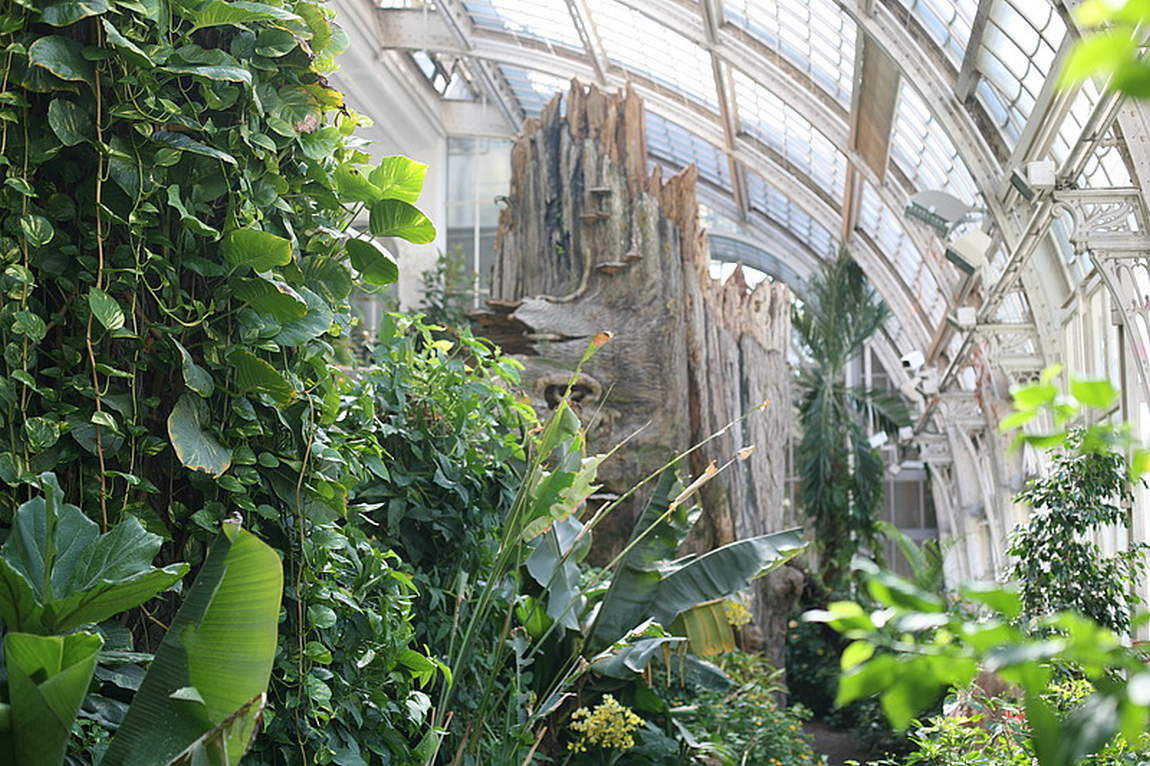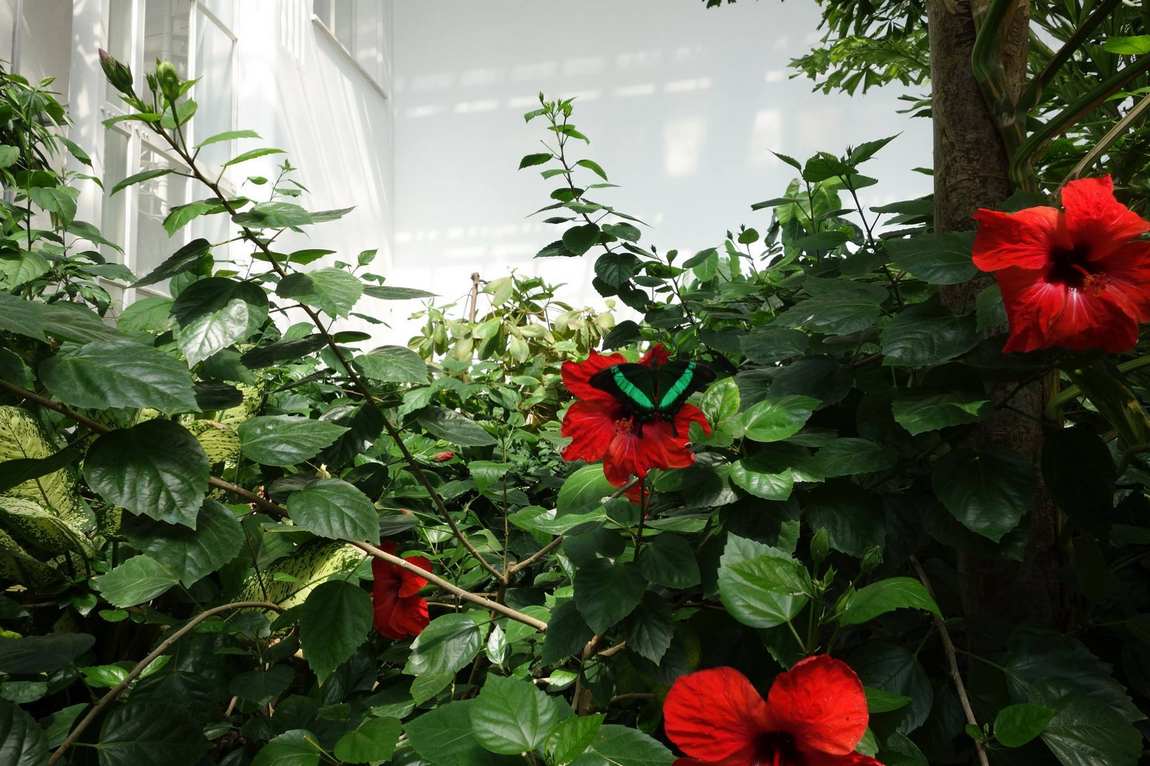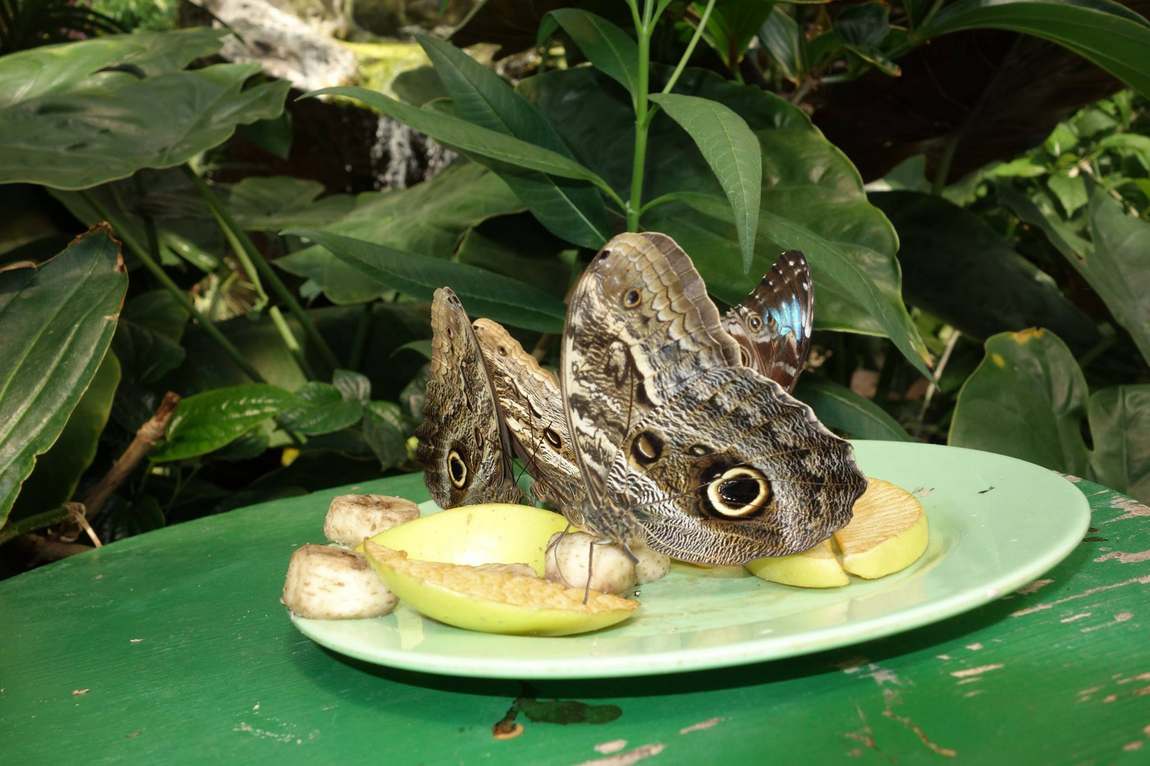In 1997, the Butterfly House opened its doors to the real world of the rainforest in the palm pavilion of the Burggarten in Vienna. It is worth noting that the Butterfly Museum has welcomed visitors before: it was located on the grounds of Schönbrunn Palace until the moment of its relocation.
Visitors to the museum will be surprised at the extent, number and diversity of the butterfly population. Several hundred fragile creatures fly, swirl, flutter and dance under the vaults of the Art Nouveau glass and steel building. Children are often brought here on field trips, willing to spend hours watching the whirlwind of wings of different shades and colours.

Both the museum itself and the castle gardens are very beautiful. It covers almost 4 hectares and is full of lush plants and huge trees.
Every day of the year you can walk among live, free-flying tropical butterflies. They live in a natural tropical environment designed specifically for their well-being. The butterflies are native to tropical countries such as Costa Rica, Belize, Suriname, Thailand and the Philippines.

The specialists have recreated their natural habitat, so the temperature inside the house hovers around 26 degrees and the humidity is around 80%. The glass construction of the building allows maximum natural light, which is important for all the plants and butterflies in the house.
Ponds, waterfalls and bridges are the main features of the harmonious landscape. The park has a tranquil, even intimate atmosphere. This green oasis in the heart of the Austrian capital gives visitors a chance to relax after a long walk in the city. Strolling along the narrow paths you can experience the pleasure of living in the countryside. And just a few hundred metres away, the bustling metropolis has its own dynamic life.

It is worth noting that the plants you see in the garden have been chosen with the needs of butterflies in mind. Some are nectar-producing plants, which provide food for butterflies, and some are caterpillar food plants, on which butterflies lay their eggs and on which the caterpillars feed. Flowering plants produce nectar, the main food for butterflies. These include hibiscus, lantana, heliotrope and plumbago. You will also find colourful compositions of artificial flowers in the flight zone. These are used as food and are regularly sprayed with a honey solution. Some butterflies also like fruit juices, so there is always fruit in the house.

In the museum garden you can enjoy not only the magnificent nature, but also the beautiful Austrian architecture. There are many monuments in the grounds of the Hoffburg. The most famous are those dedicated to Mozart, Goethe, Franz I and Emperor Franz Joseph.
And of course there are lots of butterflies! There are a huge number of them in the conservatory, both common and exotic. One of the museum's most famous wonders is the giant peacock butterfly with a wingspan of 30 centimetres. Take your young children to the Tropical Conservatory, where you'll see the complete life cycle of insects (from larvae to adult butterflies). The best place to see these fluttering creatures is at their feeding grounds. If you are particularly lucky, you may be able to witness the birth of a new butterfly from its cocoon. This always leaves a lasting impression on young botanists.
On your way back, don't forget to stop by the small souvenir shop where you can buy souvenirs for your family and friends. Or a cute butterfly-shaped souvenir magnet will be a nice reminder of your visit.
Vienna's themed museums, such as the House of Music and the House of the Sea, are also worth a visit with the kids.











